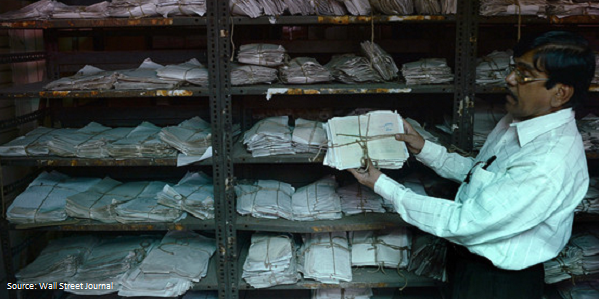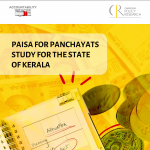
Teaching About the Government and Bureaucracy in India
27 October 2021
I like teaching, though I am not trained for it.
Over the years, I’ve enjoyed teaching in diverse classrooms, ranging from bureaucrats, to interns working in the government, and even other teachers.
Through these years, teaching has transformed me. I used to be opinionated and inflexible about what I would teach and how I would teach it. This came from earlier experience in lecturing to bureaucrats in training institutions, where, mostly because of one’s seniority or the fact that the bureaucrats who run theses training institutions are themselves not trained teachers, one was given a free hand. I was used to not being questioned about my methods.
However, since then I’ve worked more with pedagogists, who advise me on what I should say, how, and in what sequence. I am putty in their hands — because they know more about comprehension and cognition than I do.
As we emerge from the COVID-19 mayhem, the Accountability Initiative has begun its training season in earnest. Usually beginning from September, we get into our stride. This year has been particularly busy, with three training programmes done and a few more expected before the end of the year.
In our programmes, where I touch upon the basic theories that relate to fiscal federalism, we have sessions devoted to the history of democratic decentralisation in India, followed by sessions on the structure of the government. The last sessions are the ones that I find most difficult to teach. In our sessions on the structure of the government, we speak about the three vertical divisions, namely, the legislature, judiciary and the executive. We also discuss the three horizontal levels, namely, the union, state and local governments.
This can be boring and confusing to the most diligent of students, if these are not supported by adequate visuals or examples. Even so, there are limitations in creating an image of how the government is subdivided. To make our task easier, we conduct these sessions only after we have done involved sessions on decentralisation, and how functions are assigned to different governments in a decentralised governance system.
Last week, Rajika Seth, my colleague who masterminds our training outreach programmes, and I took stock of a recently finished programme. I remarked how the patterns of confusion in the minds of the students were repeating themselves.
Here are some common misperceptions that we see, when we ask students to give examples of various government institutions and positions, and slot them into a grid distinguished by the three vertical divisions of the legislature, judiciary and the executive, and the horizontal levels of the union, state and local governments.
As concerns the legislature, there is universal understanding that it comprises (at the union-level) of the Lok Sabha and the Rajya Sabha; at the state-level of the Vidhana Sabhas and the Vidhana Parishads; and at the local-level of the elected Panchayat and Municipal bodies. Of course, purists might argue that, strictly speaking, the local representatives cannot make law. However, we assert that they can issue byelaws and set the rules. This is, broadly speaking, a performance of legislative function at that level.
Then comes the judiciary, where there is no confusion in the minds of students that it comprises the Supreme Court at the union, and the High Courts at the state-level. They also understand that these two levels are vertically integrated through the process of the selection of judges. However, confusion usually arises when students categorise District and Munsiff courts as part of the local level of government.
This is where we once again emphasise the significance of the process of deconcentration and distinguish it from ‘devolution’. We explain that the District and Munsiff courts are not devolved entities; they have not even the remotest connection with the local district and sub-district local governments. Simply because they are located at the district and sub-district levels, they cannot be classified as local institutions; they are more in the nature of deconcentrated local extensions of the state-level judiciary, entirely controlled by the latter.
I often wonder if students get that difference.
In order to emphasise the distinction, I speak of the idea of the Nyaya Panchayats, provisions for which have been enacted in seven states, even though they are operational only in two. I draw attention to the fact that Nyaya Panchayats are not selected by the higher judiciary, but through a statutory election process and that their adjudication is more in the nature of dispute resolutions without the trappings of a court. That could arguably be a local judicial institution, I assert.
‘What about Grama Nyayalayas?,’ some students ask, and I am stumped. For the reason that whilst these are supposed to be located at sub-Taluk levels, they are still not local in the sense that they are controlled and superintended by the local governments. They are examples of further deconcentration below the Taluk level, I explain. I am usually met with silence, which I fear is an absence of comprehension.
However, where Rajika and I face the greatest challenge, is to explain the labyrinth that is the structure of the executive. We argue often on how we best explain that. Do we do it through a boring table? (Which is what we do at the moment.) Do we use powerful imagery, of a hydra-headed monster? No, that would be too negative, I think.
More about the mess that is India’s executive, bureaucracy in India in my next blog.
T.R. Raghunandan is an Advisor at Accountability Initiative.
Also Read More About: The Understanding State Capabilities learning programme





